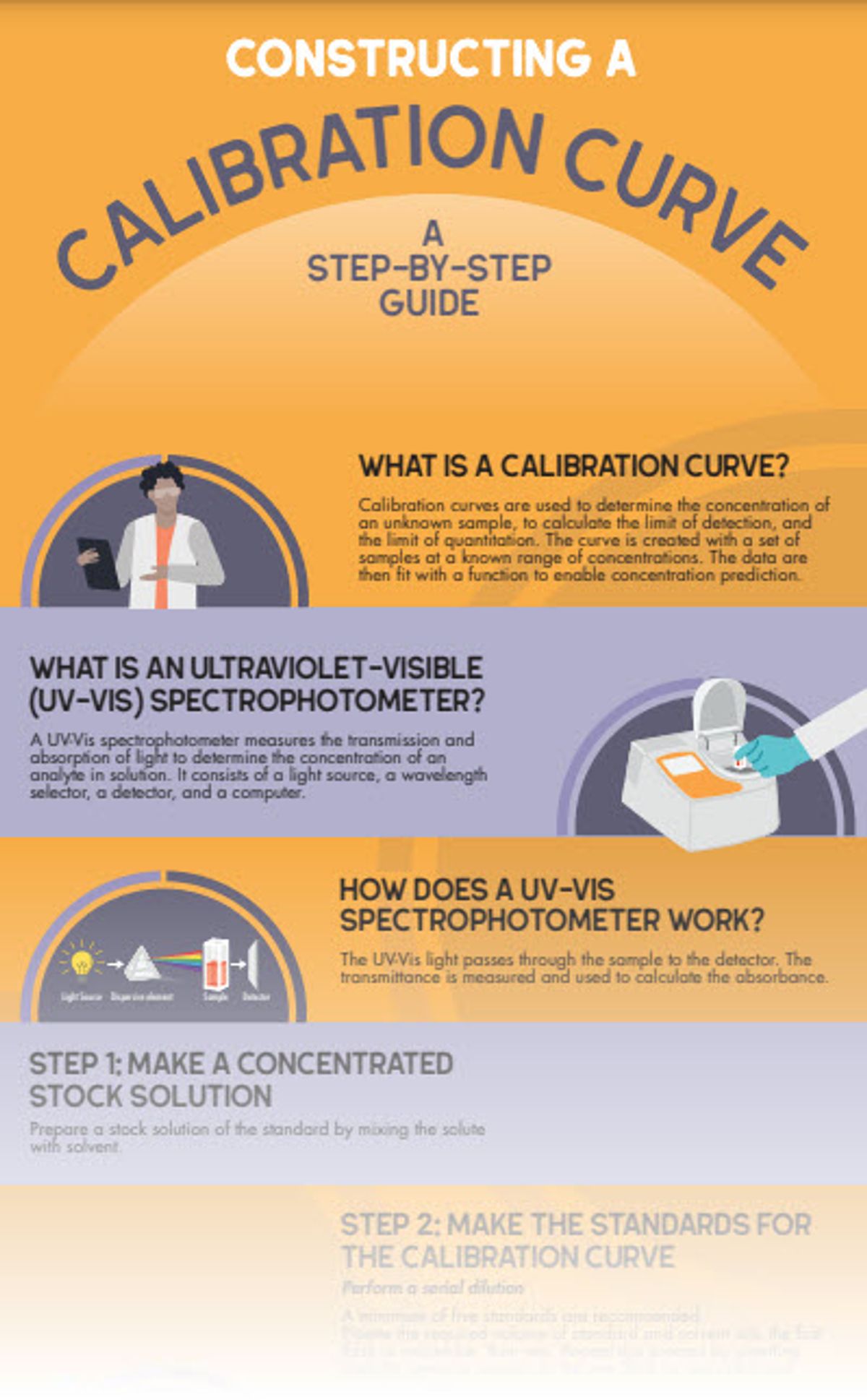Calibration curves are a vital tool in the world of analytical chemistry, enabling you to determine the concentration of unknown samples with accuracy and precision. Creating a calibration curve involves preparing a range of samples with known concentrations and measuring their instrumental responses. These data points are then plotted on a graph, and a mathematical function is fitted to establish the relationship between concentration and response.
With a well-defined calibration curve in hand, you can effortlessly determine the concentration of unknown samples by comparing their instrumental responses to the curve. Moreover, the calibration curve provides invaluable insights into the limits of detection and quantitation, enabling you to assess the sensitivity and reliability of your analytical method.
Download this infographic now and learn more about how calibration curves can elevate your analytical capabilities.

